Eber’s water towers – Finland
The leading trade journal in Sweden, VA-tidskriften Cirkulation has since 1998 an article series under the heading Ebers vattentorn (Eber’s water towers), where Eber Ohlsson with text and photo presents interesting water towers in the world (except Scania and Sweden). Below is a free translation to English of these texts.
Eber’s water towers in Cirkulation 4/2024

A free translation to English:
About half of Finland’s Finnish-Swedish population lives in Ostrobothnia. Here, at the height of Umeå, is Jakobstad, with a population of just under 20,000 inhabitants. The city has always had a Swedish-speaking majority and was founded in 1652 by the widow after Jakob De la Gardie, hence the name.
The city’s water supply was added at the beginning of the 20th century, but where the proposal in 1913 for a water tower was never realized due to the cost. On the other hand, a water tower with a vantage point was realized, which was completed in 1930 and has stylistic features from both classicism and art deco. It was designed by the architect and professor Lars Sonck.
Published 2024-06-05
Eber’s water towers in Cirkulation 2/2019
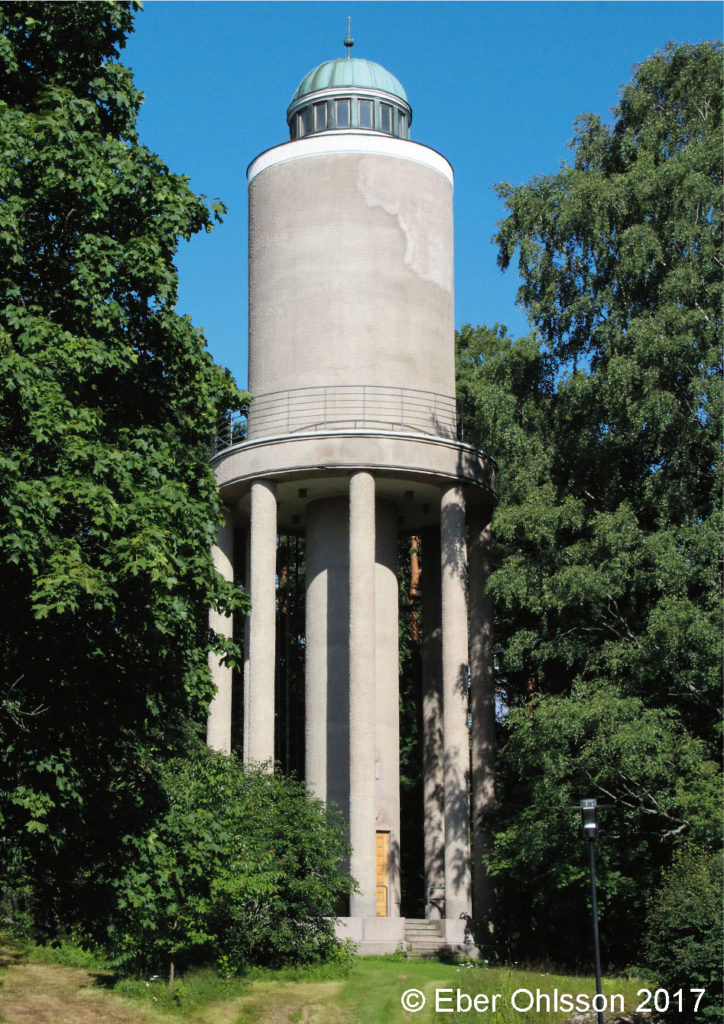
A free translation to English:
Water is a prerequisite for life, while its opposite does not necessarily is valid. Our culture of preserving the memory and the remains of those who are no longer in life has created rooms for this memory. Modern cemeteries in our culture sphere often have verdure, with lawns, flowers and trees.
Verdure needs water and then can a water tower be useful. Such a tower, probably drawn by architect Albert Nyberg, was built in the late 1930s at Malm’s cemetery in Helsinki, opened in 1894 and today Finland’s largest. It was the construction company Otto Vuorio who built the tower.
Published 2019-03-13
Eber’s water towers in Cirkulation 1/2012
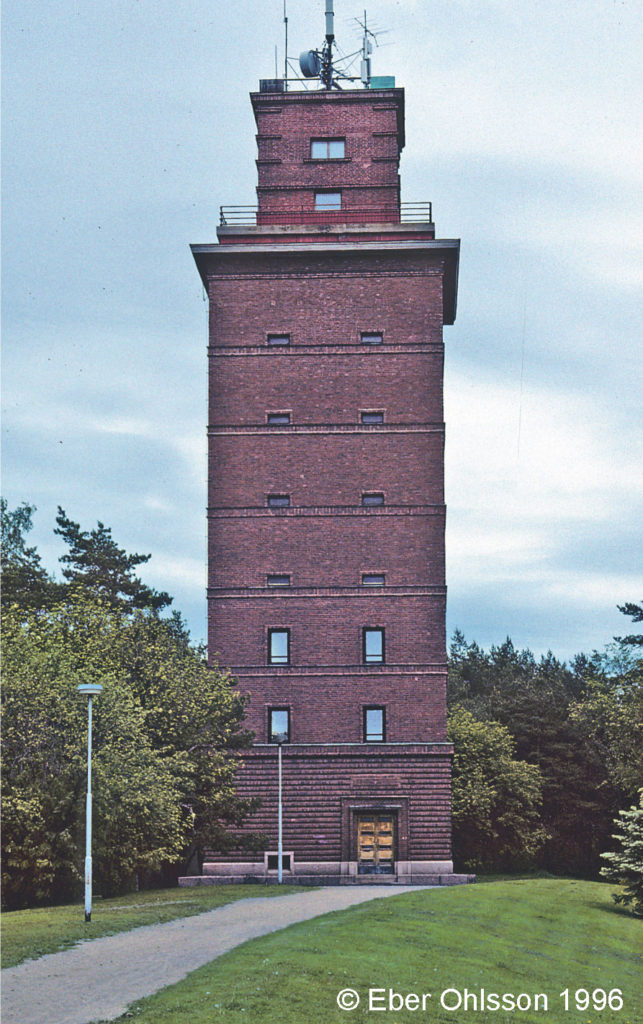
A free translation to English:
City Fires used to be a major threat in former times, paricularly in wooden cities, disasters that of course was tried to forestall. A solution was patrolling fireguards, as the Swedish speaking town Ekenäs in the southern Finland had after a big fire 1821. Another solution was to watch over the town from a tall building.
When Ekenäs built a new water tower in 1931, there were at the top of the tower’s two-story lantern room for a fire watcher. Room that however did not come to be used for its intended purpose. The 35 meter high tower, with a reservoir of 370 m³, was designed by architecht Ragnar Wessman. Tower operation was closed 1977th.
Published 2012-02-15
Eber’s water towers in Cirkulation 3/2011
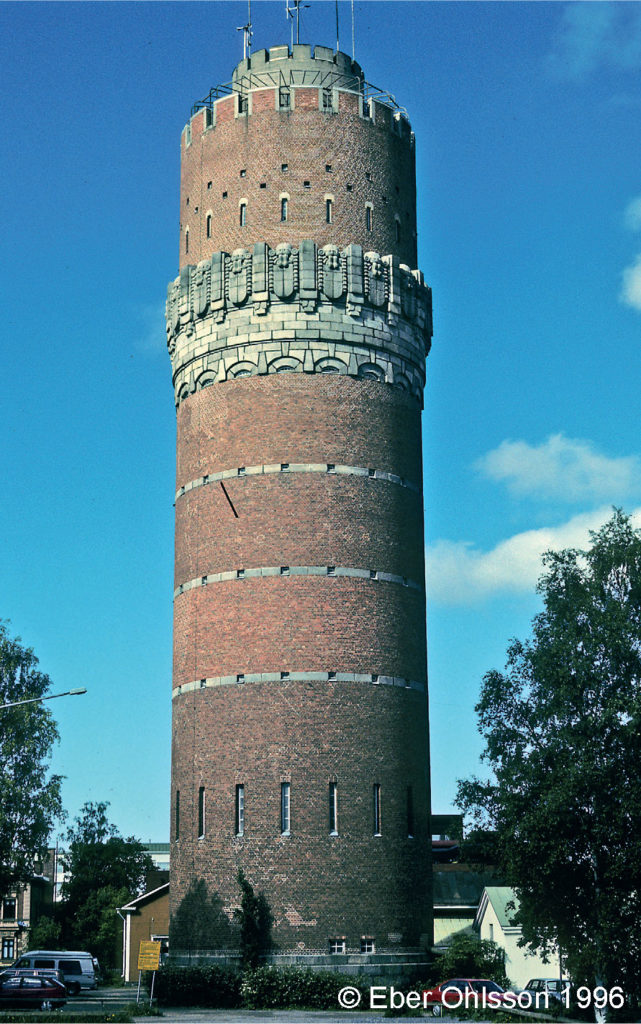
A free translation to English:
In Finnish Österbotten stood there until the 1950s, Vasa on the top of the place name signs and Vaasa thereunder, when you approached the city. It showed that there was a Swedish-speaking majority here. But since then the majority has shifted, so now is it standing Vaasa on the top.
At the time when Finland was a grand duchy of Russia, was there advertise an architectural competition for a new water tower in the city. The brothers Jussi and Toivo Paatela won and in 1915 was the 47 m high water tower in the Art Nouveau style with a reservoir of 500 m³ completed. For a long time you could walk the 200 steps to the tower’s observation deck and look out over the city.
Published 2011-05-04
Eber’s water towers in Cirkulation 2/2009
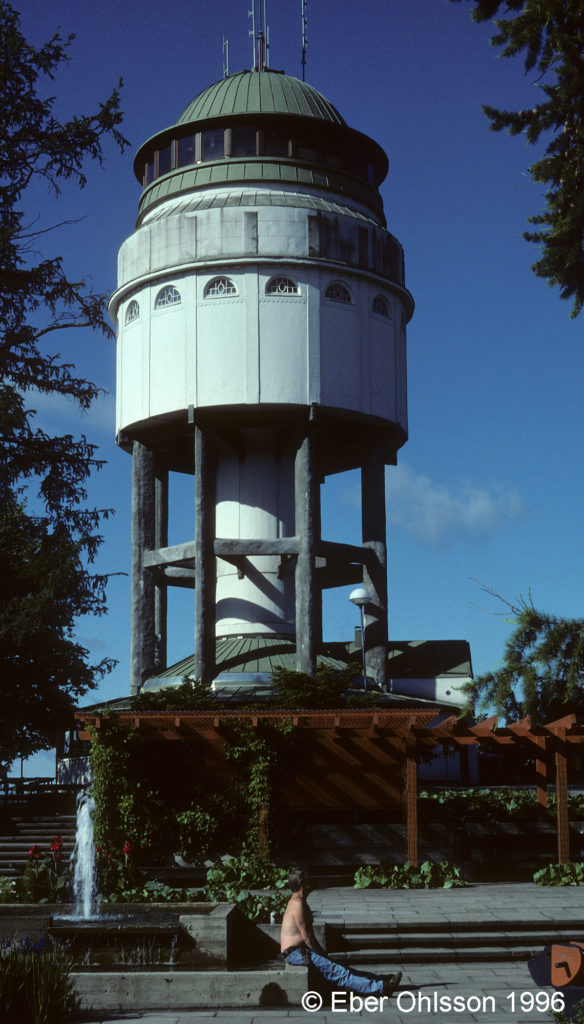
A free translation to English:
In the cathedral city Mikkeli, Finnish name on St Michel, in lake district of Finland, was there 1880 built a fire lookout tower on the Kvinnoberget [The Woman’s mountain]. At that time was there also added a café and a park. It is not less commendable to extinguish fires than to discover them, so 1911-12 was there on the same place built a water tower in reinforced concrete after drawings by Selim A. Lindqvist.
During the World War II was there a liaison central of the Anti-Aircraft Command in the interior of the Kvinnoberget. After the war, 1946 was the upper part of the tower rebuilt after drawings by Eero Jokilehto. From the new belvedere platform could the Finlander now again peaceful scout to the east.
Published 2009-03-18
Eber’s water towers in Cirkulation 3/2006
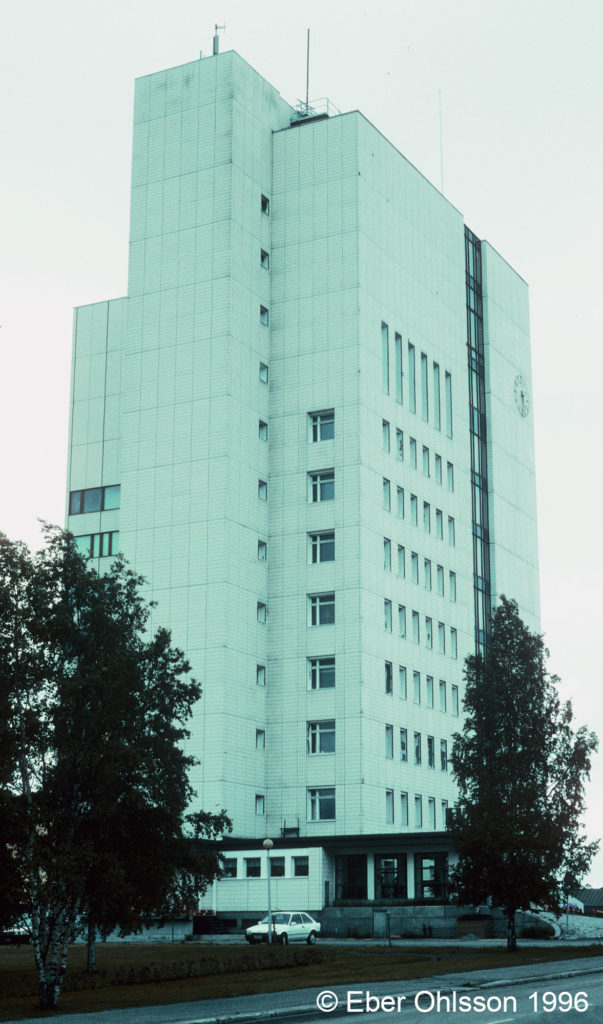
A free translation to English:
In the northern part of the Gulf of Bothnia is the Finnish town Kemi situated. Here was 1939-42 a 52 m and 14 storied high town hall built, drawn by Bertel Strömmer, with two reservoirs of total 500 m³ in the upper part of the house. After the peace between Finland and the Soviet Union 1944 became the German forced to retreat northbound and destroyed much under there’s retreat. In Kemi blasted they a three storied big hole in the town hall which nevertheless was still standing and could be repaired and extended 1945.
A new enlargement of the town hall, drawn by Aarne Ervi, was done 1965-69, and at that time three new cistern was added, so that the total volume of the five reservoirs was 2 500 m³.
Published 2006-04-26
Eber’s water towers in Cirkulation 3/2003
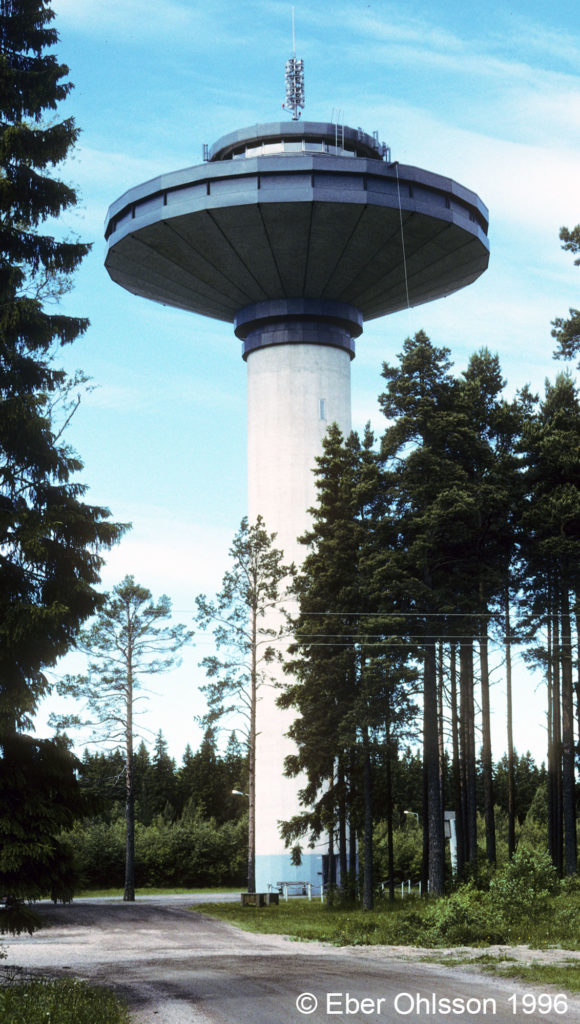
In the bilingual country Finland is the Swedish name of the municipality, Euraåminne and the Finnish name Eurajoki.
A free translation to English:
The Earth is rotating. A phenomenon that you occasionally can see at the water tower in Euraåminne/Eurajoki in the western Finland. In the corbelling edge of the tower is there fasten a 40 meter long and 110 kg heavy pendulum. When the pendulum is start move, it will according to the law of inertia continue to swing in the same direction. The Earth’s rotating lead however to that the pendulum seemingly is change direction.
As the pendulum is long, it takes time before it will stop move, which does it easier to see the change of the moving. It is an experiment that is called Foucault’s pendulum, and will normally be done indoors. In the shelter of the Finnish forest is this done outdoors. On and off.
Published 2003-04-30
Eber’s water towers in Cirkulation 3/2000

The name of bilingual town is in Finnish = Hanko and in Swedish = Hangö.
A free translation to English:
Grey and apparently gloomy water tower sits in state on the hill in Hanko/Hangö, the southernmost town in Finland. But the tower is coloured by the history. It was finished 1943 just while the war was raging, and replaced at that time a water tower in granite from 1910. The old tower had the Russian burst 1941, when they were forced to leave the leasehold zone Hanko/Hangö.
The new 48 metres high tower, with a reservoir standing on among other things four rectangular pillars, is designed by engineer Nikander and architect Bertel Liljeqvist. On the top of the of the pillars should originally mermaid decorations has been placed, but because of the expense sit in state there now shells, shaped by the sculptor Gunnar Finne.
Above the reservoir on 490 m³, is there a belvedere, from where you can see over the water of Hanko/Hangö. The first tower on this place was a fire tower in tree that stood there 1886-1910. All the three towers had one detail common, a clock in all the four cardinal points. In other words – they bear the impress of the times.
Published 2000-05-03
